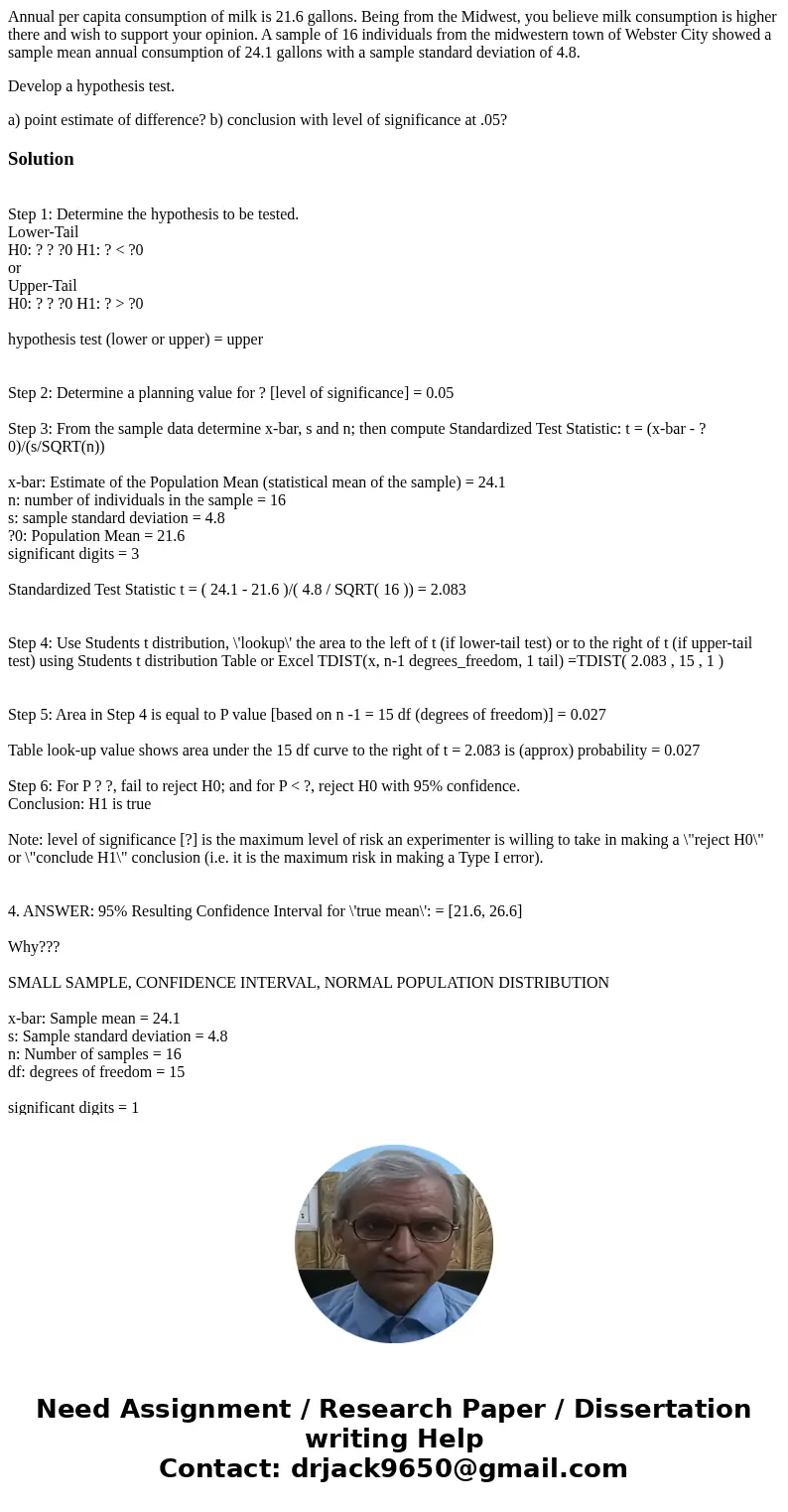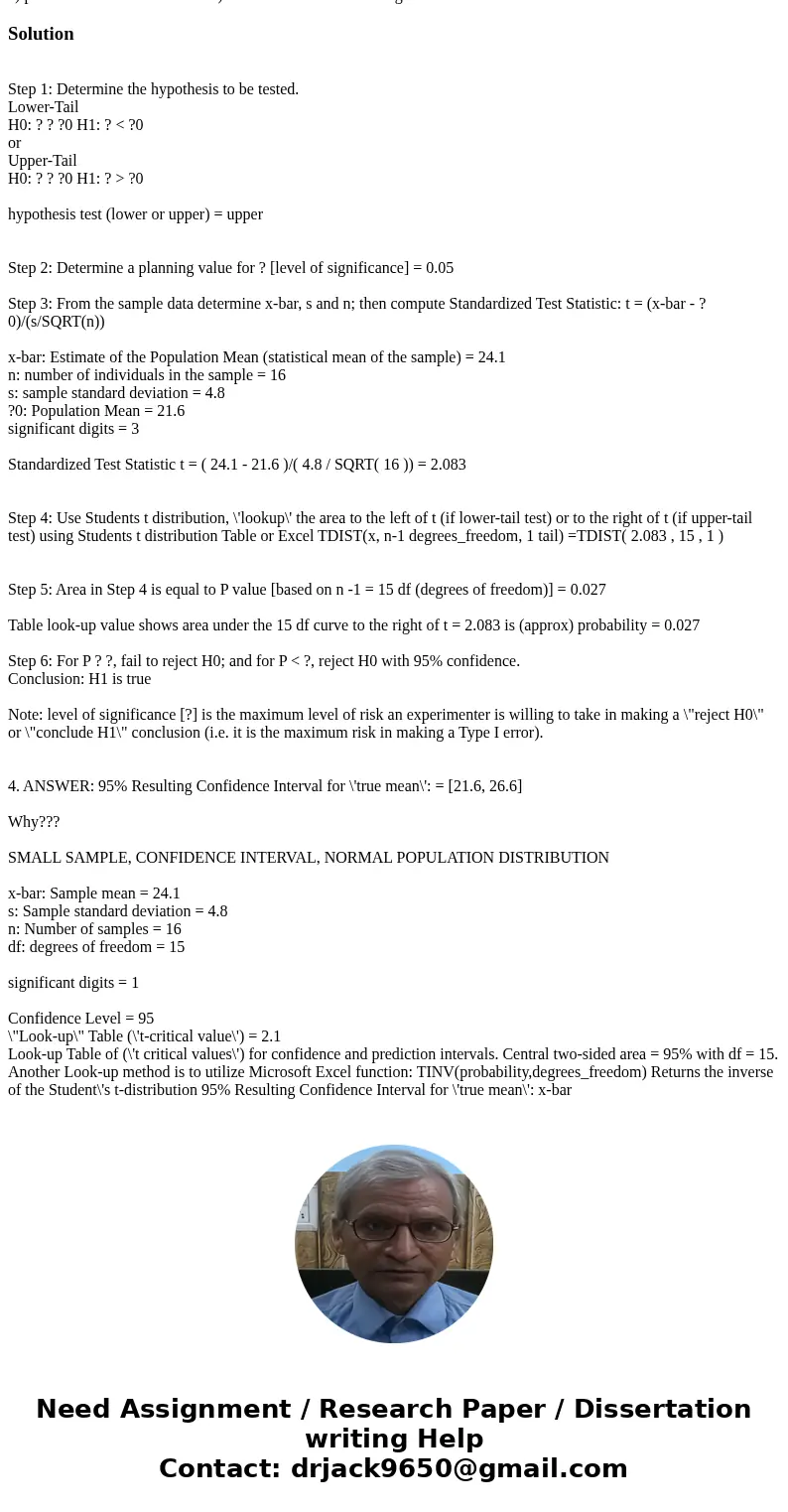Annual per capita consumption of milk is 216 gallons Being f
Annual per capita consumption of milk is 21.6 gallons. Being from the Midwest, you believe milk consumption is higher there and wish to support your opinion. A sample of 16 individuals from the midwestern town of Webster City showed a sample mean annual consumption of 24.1 gallons with a sample standard deviation of 4.8.
Develop a hypothesis test.
a) point estimate of difference? b) conclusion with level of significance at .05?
Solution
Step 1: Determine the hypothesis to be tested.
Lower-Tail
H0: ? ? ?0 H1: ? < ?0
or
Upper-Tail
H0: ? ? ?0 H1: ? > ?0
hypothesis test (lower or upper) = upper
Step 2: Determine a planning value for ? [level of significance] = 0.05
Step 3: From the sample data determine x-bar, s and n; then compute Standardized Test Statistic: t = (x-bar - ?0)/(s/SQRT(n))
x-bar: Estimate of the Population Mean (statistical mean of the sample) = 24.1
n: number of individuals in the sample = 16
s: sample standard deviation = 4.8
?0: Population Mean = 21.6
significant digits = 3
Standardized Test Statistic t = ( 24.1 - 21.6 )/( 4.8 / SQRT( 16 )) = 2.083
Step 4: Use Students t distribution, \'lookup\' the area to the left of t (if lower-tail test) or to the right of t (if upper-tail test) using Students t distribution Table or Excel TDIST(x, n-1 degrees_freedom, 1 tail) =TDIST( 2.083 , 15 , 1 )
Step 5: Area in Step 4 is equal to P value [based on n -1 = 15 df (degrees of freedom)] = 0.027
Table look-up value shows area under the 15 df curve to the right of t = 2.083 is (approx) probability = 0.027
Step 6: For P ? ?, fail to reject H0; and for P < ?, reject H0 with 95% confidence.
Conclusion: H1 is true
Note: level of significance [?] is the maximum level of risk an experimenter is willing to take in making a \"reject H0\" or \"conclude H1\" conclusion (i.e. it is the maximum risk in making a Type I error).
4. ANSWER: 95% Resulting Confidence Interval for \'true mean\': = [21.6, 26.6]
Why???
SMALL SAMPLE, CONFIDENCE INTERVAL, NORMAL POPULATION DISTRIBUTION
x-bar: Sample mean = 24.1
s: Sample standard deviation = 4.8
n: Number of samples = 16
df: degrees of freedom = 15
significant digits = 1
Confidence Level = 95
\"Look-up\" Table (\'t-critical value\') = 2.1
Look-up Table of (\'t critical values\') for confidence and prediction intervals. Central two-sided area = 95% with df = 15. Another Look-up method is to utilize Microsoft Excel function: TINV(probability,degrees_freedom) Returns the inverse of the Student\'s t-distribution 95% Resulting Confidence Interval for \'true mean\': x-bar


 Homework Sourse
Homework Sourse